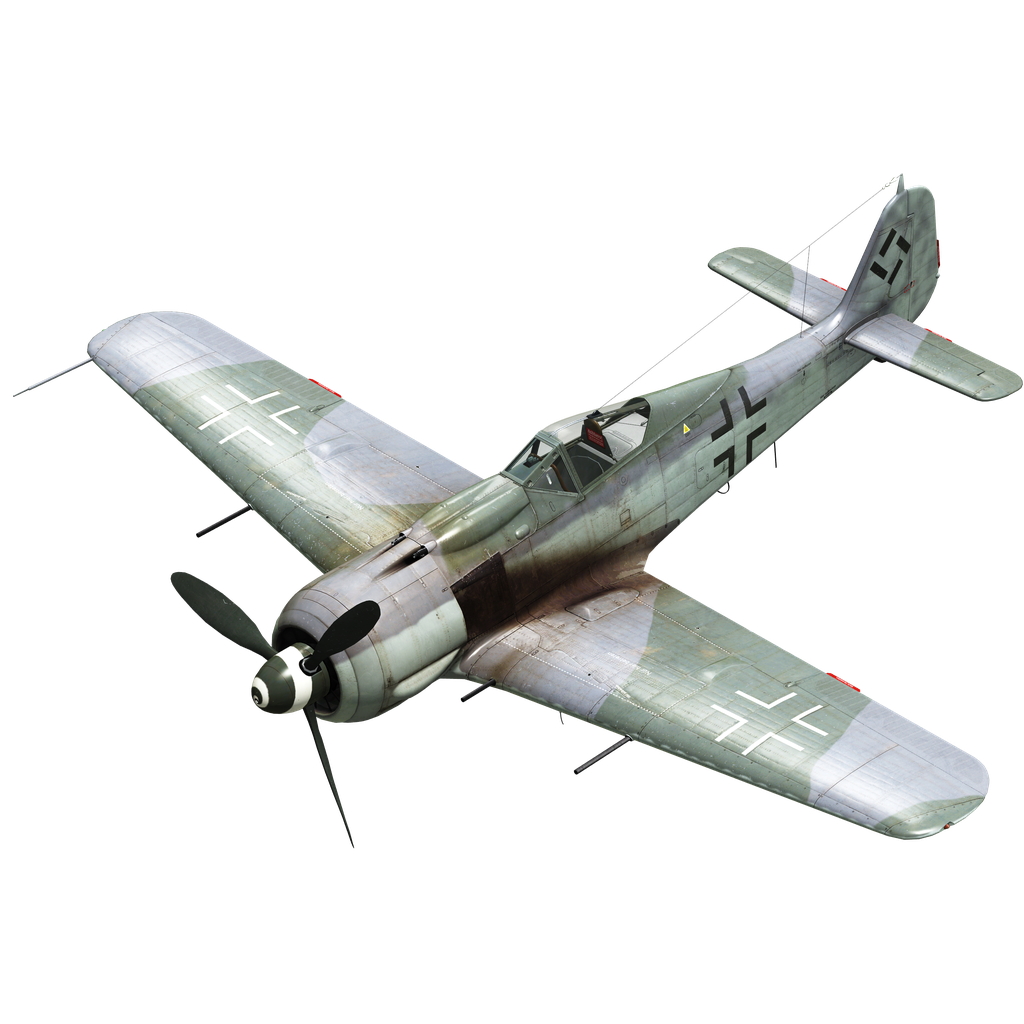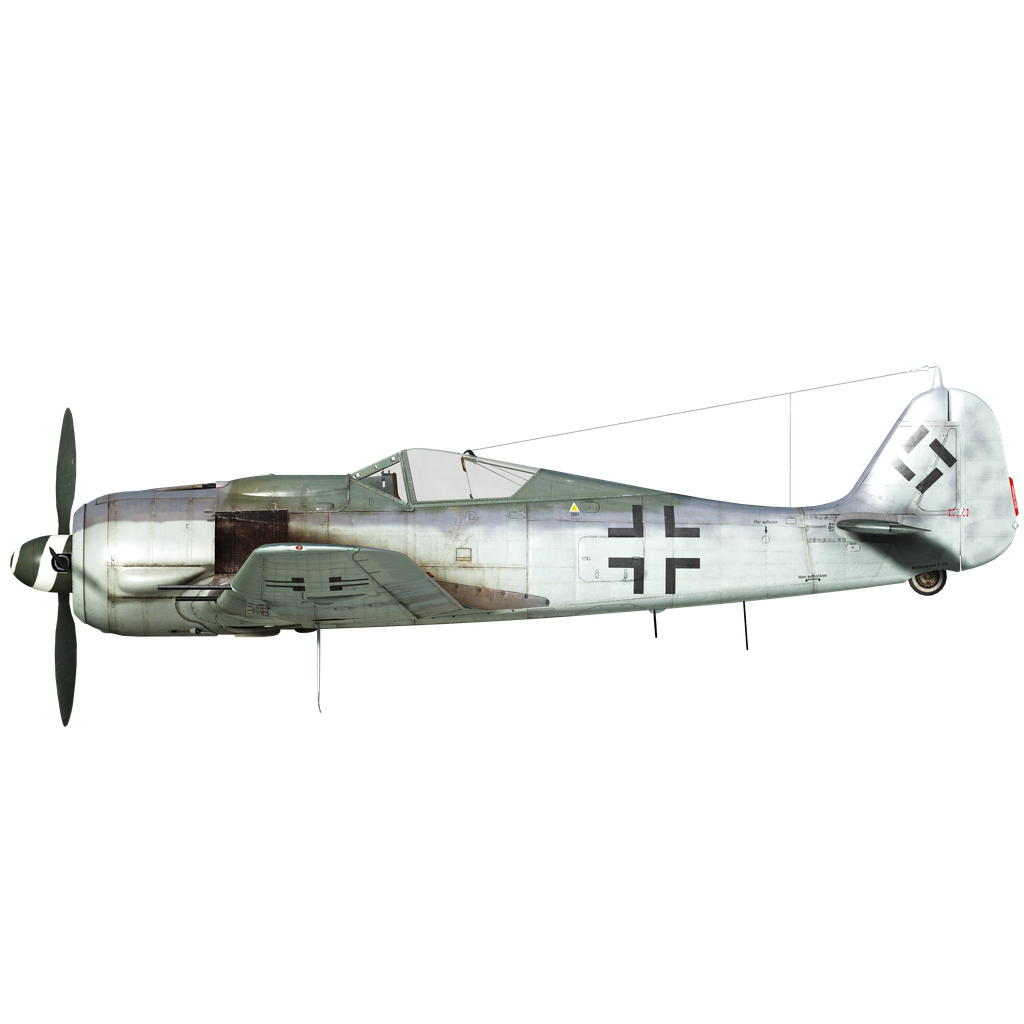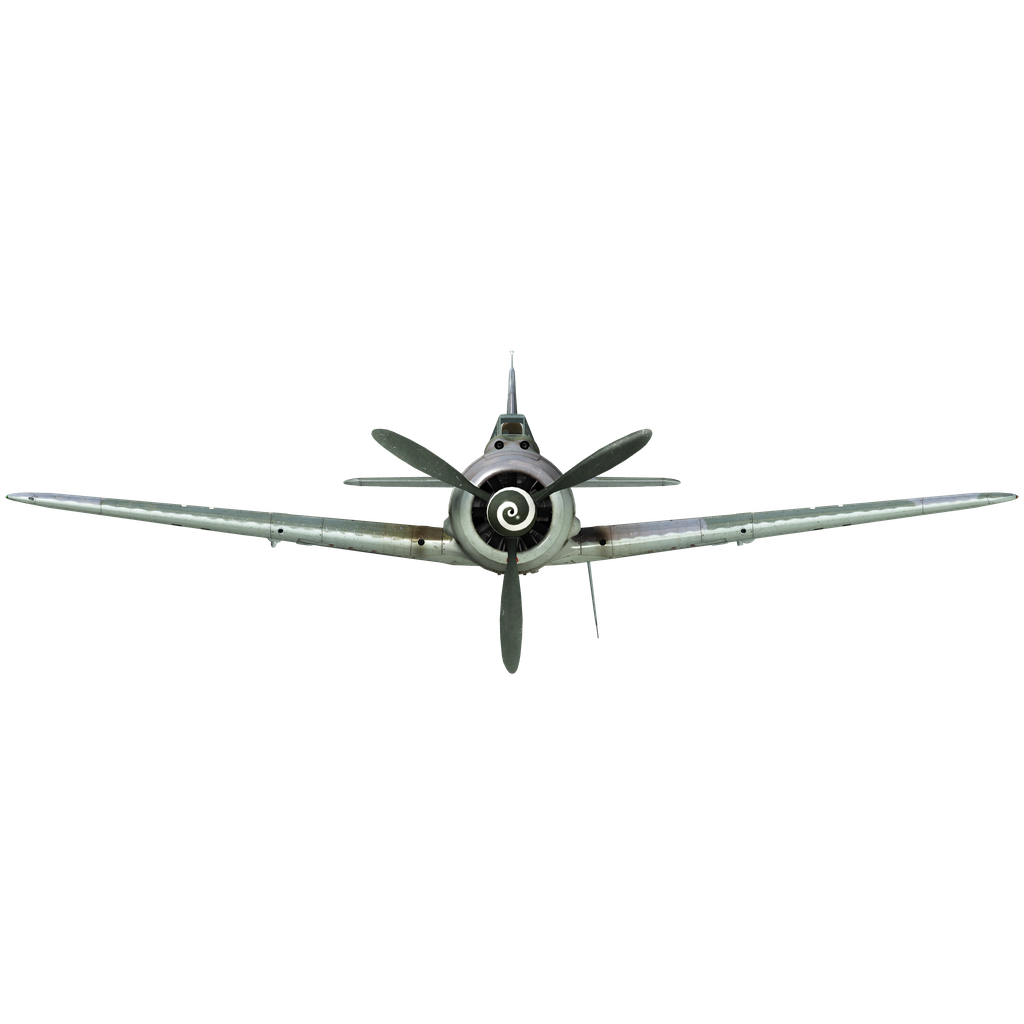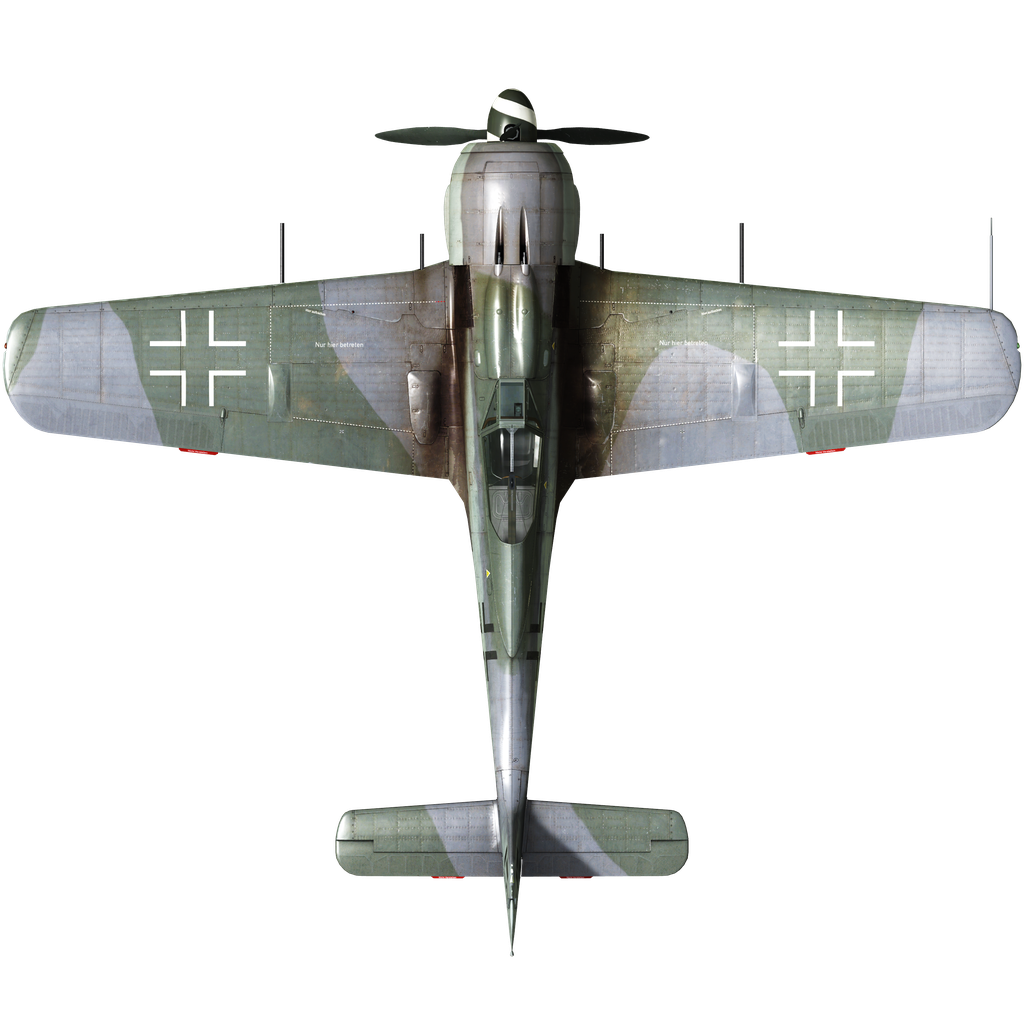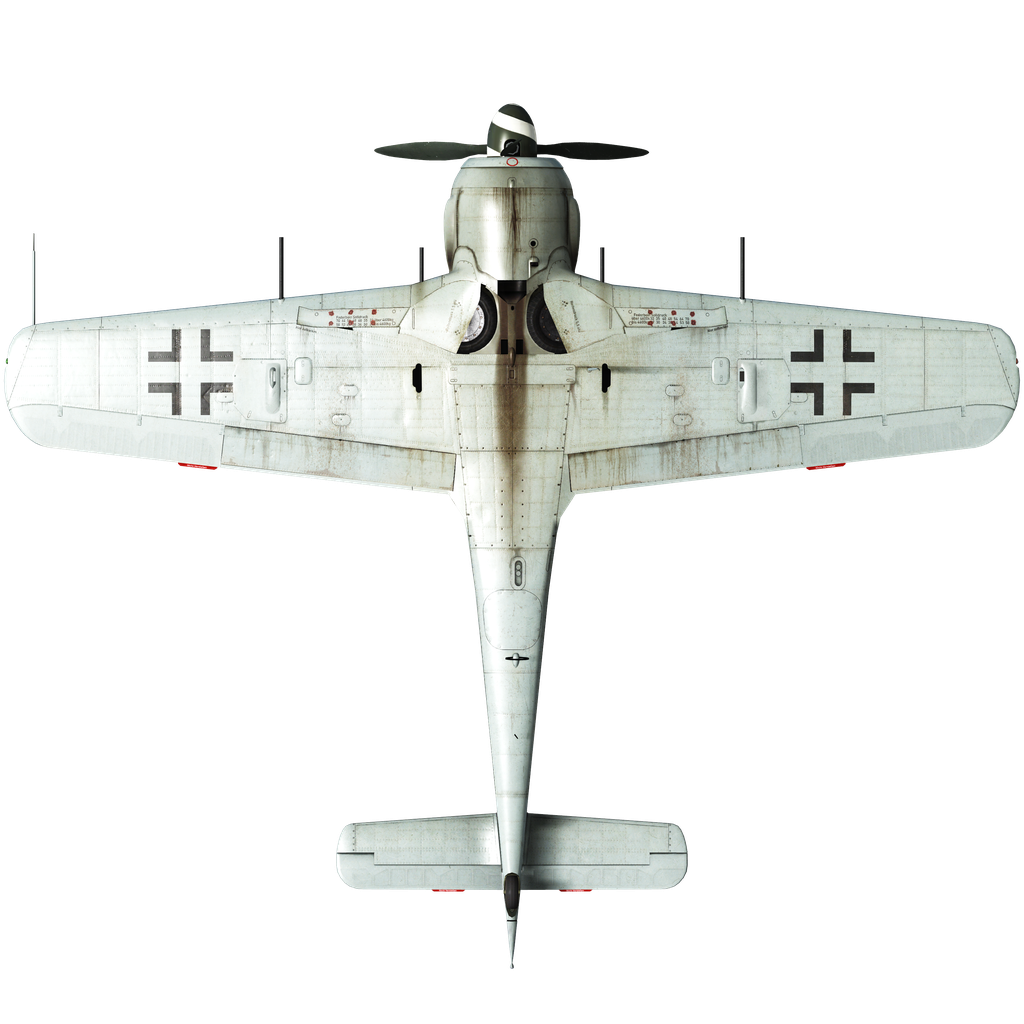In 1938, the Luftwaffe Technical Directorate, disappointed by the debut of the first Bf 109 series in Spain, asked Focke-Wulf to design a new fighter. A distinctive feature of the new aircraft, whose prototype took to the skies on June 1, 1939, was the use of an air-cooled engine and a large convex cockpit canopy with a minimum of metal binding parts. The aircraft was characterized by good controllability and low stick loading. From the autumn of 1940 to the beginning of 1944, aircraft from the A-0 to A-7 series were delivered to combat units.
From the beginning of 1944, the problem of countering Allied bombers, which were now heavily escorted by fighters, became more acute. In March 1944, the British and Americans unexpectedly encountered the new Fw 190 A, which had more effective weapons and armor — it was an aircraft of the Fw 190 A-8 modification.
This aircraft differed from the previous modification of the A-7 by the installation of a "dry boost" system and an additional 115-liter fuel tank behind the cockpit, which made it possible to increase the aircraft's range. The pressurized air tank was moved to the right wing tip. The "dry boost" system, by installing an air pressure regulator in the pressure line of the engine, made it possible to increase the pressure and thus the power of the engine. As a result, the C3 injection system was discontinued.
The armament, as with the A-7 modification, included four cannons and two synchronized heavy machine guns.
-
A-8/R1: six 20 mm MG 151 cannons, four of which were mounted in pairs in two WB 151 mounts under the outer wing sections instead of two wing cannons. Production was soon discontinued;
-
A-8/R2: 30 mm MK 108 cannons instead of external wing-mounted MG 151/20s;
-
A-8/R3: even more powerful 30 mm MK 103 cannons under the wings. Production was soon discontinued;
-
A-6/R6: mounting of two Wfr.Gr.21 rockets;
-
A-8/R7: reinforced armored cockpit canopy (57 mm and 30 mm armored glass in front and the front side edges);
-
A-8/R8: similar to the previous variant, but with thicker armor in front of the cockpit and armor plates in front of the MK 108 wing cannon bays, mounted like the R2. External armor was also installed on the sides of the cockpit and 30 mm thick armored glass on the canopy, where the MG 131 machine guns were removed to reduce weight. Successful use in combat led to an order for mass production of the Fw 190 A-8/R8 "Ram" modification;
-
A-8/R11: night fighter-interceptor, Neptune or Liechtenstein radar installed;
-
A-8/R12: night fighter, a combination of R2 (MK 108 cannons instead of external wing MG 151/20) and R11 (radar).
In addition, a factory-modified A-8/U1 (or Fw 190 S-8), a two-seater trainer, was built to retrain fighter pilots from dive bombers to the Fw 190 (58 aircraft were built).
In addition to the main modification of the Fw 190 A-8, an attack version was produced, designated F-8. The external cannons were removed, and the external armament consisted of a ventral bomb rack capable of carrying up to a 1000 kg bomb, and four bomb racks under the wings. These aircraft were used by the so-called "Sonderstaffel Einhorn." A 1000 kg bomb could be carried specifically for attacks on high-value targets. Typically, F-8s carried a 250 or 500-kg bomb and four SD 70s under the wings.
There was also a bomber modification of the G-8, capable of carrying a 500 kg bomb or external tank under the fuselage and a 250 kg bomb under each wing.
The Fw 190 A-8 was a test aircraft for air-to-air missiles: wire-guided X-4 missiles were mounted under the wings.
The Fw 190 A-8 became the most-produced variant — 6,597 were produced before the end of the war, not counting the two-seat training, bomber, and attack versions.
Used sources:
1. W. Creen “The Warplanes of the Third Reich”, Galahad Books, 1986
2. “Wings of the Luftwaffe” Translation of V. Green’s book “Combat Aircraft of the Third Reich” by A. Firsov, 1993
3. A.N. Bear "Focke-Wulf FW190" Arsenal-Press, 1993
4. O. Rastrenin “Luftwaffe attack aircraft. Myths and Reality” journal. Aviation and Cosmonautics, No. 3, 2014
5. Materials from the site airwar.ru
